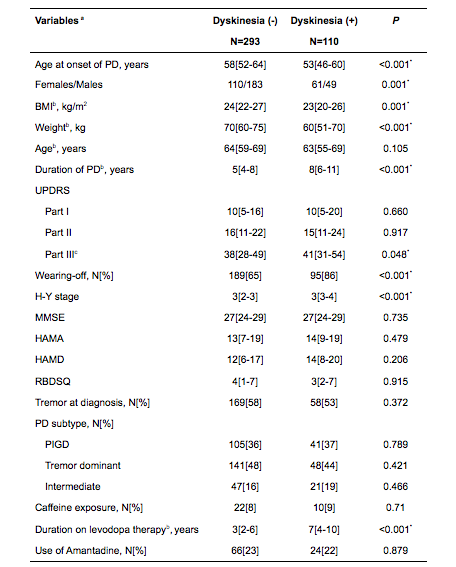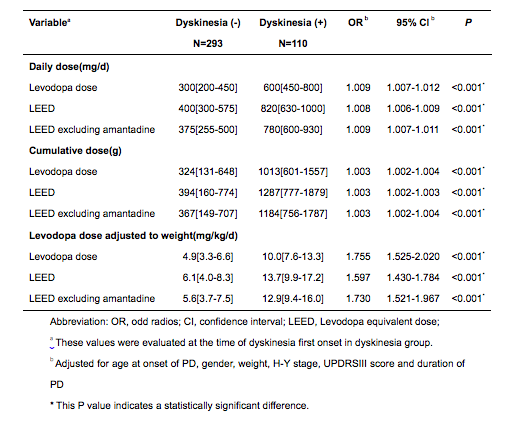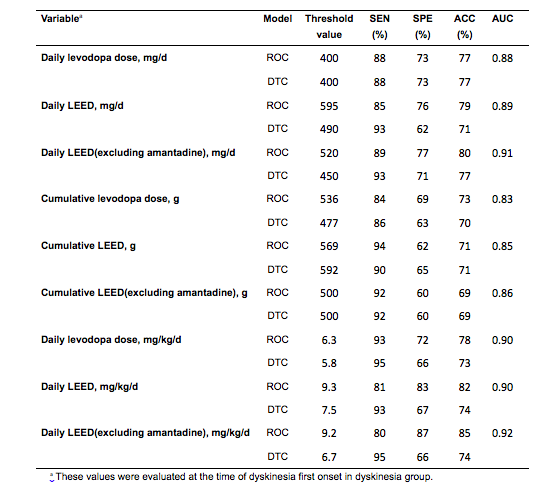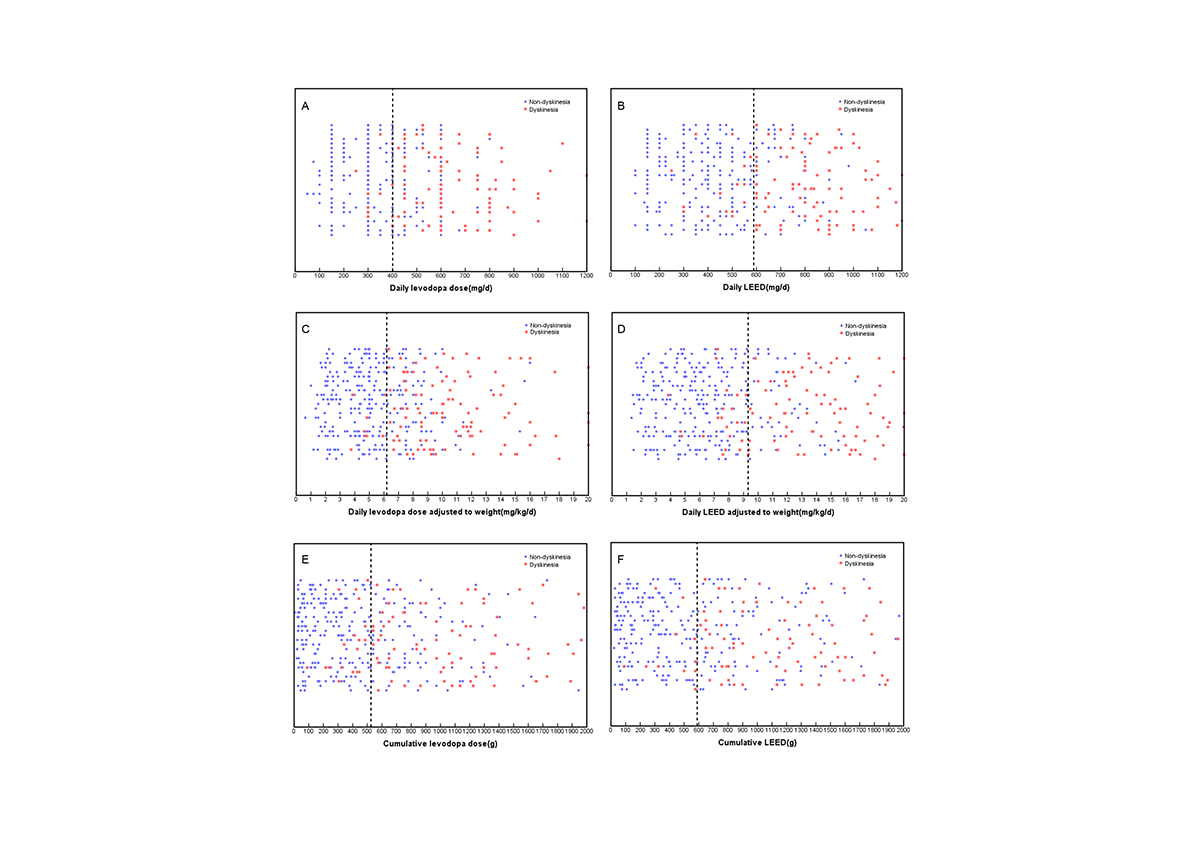Session Information
Date: Monday, September 23, 2019
Session Title: Clinical Trials, Pharmacology and Treatment
Session Time: 1:45pm-3:15pm
Location: Agora 3 West, Level 3
Objective: The objective of this study was to investigate the thresholds of levodopa dose to reduce the risk for dyskinesia in a Chinese PD population.
Background: Levodopa is widely used to treat Parkinson’s Disease (PD), and its long-term therapy may induce dyskinesia in a dose-dependent manner. However, the threshold dose with a relatively low risk for dyskinesia has not been determined.
Method: Demographic, clinical profiles and detailed information of dopaminergic drugs were recorded for 403 Chinese PD patients in treatment with various doses of levodopa. Variables were compared between dyskinesia and non-dyskinesia groups. Multivariate logistic regression analysis was used to assess the association between levodopa dose-related variables and dyskinesia. Receiver Operating Characteristic curve and Decision Tree Classification model were used to investigate the optimal levodopa dose to best separate the dyskinesia group from the non-dyskinesia group.
Results: Four hundred and three patients were investigated in our study, among whom 110 patients developed dyskinesia. The demographic and clinical characteristics of the non-dyskinesia and dyskinesia groups were listed in Table1. Patients with dyskinesia tended to have a lower weight and age at onset of PD, higher percentage of female and wearing-off, longer duration of disease and levodopa treatment, higher H-Y stage and UPDRS Part III scores, higher levodopa dose (daily levodopa dose, cumulative levodopa dose, daily levodopa dose adjusted to weight) and levodopa equivalent dose(LEED) of total dopaminergic drug than those without dyskinesia. After adjusted for demographical and clinical variables, levodopa dose factors were still associated with dyskinesia(Table2). To ensure that the proposed doses were clinically practical, an appropriate threshold dose for levodopa was determined based on the expert opinion of the authors and the overall performance of prediction(Table3). Finally, daily levodopa dose at 400mg/day and 6.3mg/kg/day, cumulative levodopa dose at 536g, daily LEED at 595 mg/day and 9.3 mg/kg/day, cumulative LEED at 592 g were proposed as the threshold doses for dyskinesia(Figure1).
Conclusion: In our pilot study, we evaluated the threshold doses of levodopa treatment to reduce the risk for dyskinesia. These data should be considered for the clinical prevention and management of dyskinesia in patients with PD.
To cite this abstract in AMA style:
GL. Liu, T. Feng. Risk Thresholds of Levodopa Dose for Dyskinesia in Chinese Patients with Parkinson’s Disease: A Pilot Study [abstract]. Mov Disord. 2019; 34 (suppl 2). https://www.mdsabstracts.org/abstract/risk-thresholds-of-levodopa-dose-for-dyskinesia-in-chinese-patients-with-parkinsons-disease-a-pilot-study/. Accessed December 25, 2025.« Back to 2019 International Congress
MDS Abstracts - https://www.mdsabstracts.org/abstract/risk-thresholds-of-levodopa-dose-for-dyskinesia-in-chinese-patients-with-parkinsons-disease-a-pilot-study/




